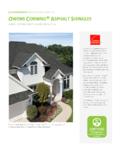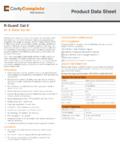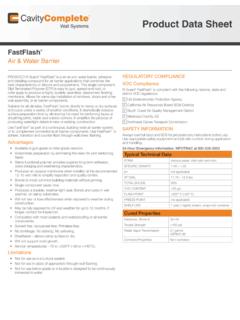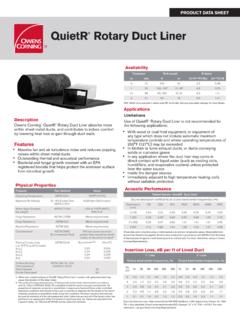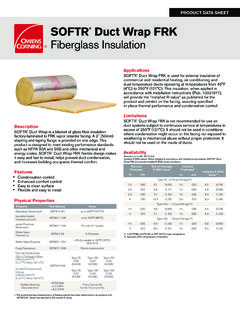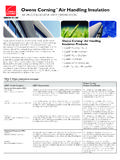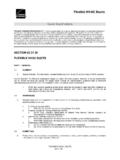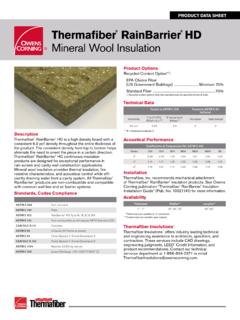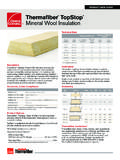Transcription of Estimates of Air Emissions from Asphalt Storage …
1 Estimates of Air Emissions from AsphaltStorage tanks and Truck LoadingDavid C. TrumboreAsphalt Technology Laboratory. owens corning , Summit, IL 60501 Title V of the 1990 Clean Air Act requires the accurateestimation of emissionsprocesses, and places theburdenrom all manufacturing of prooffor that estimateon the process owner. This paper is published as a tool to assist in the estimation of air Emissions from hot asphaltstorage tanks and Asphalt truck Loading operations. Dataare presented on Asphalt vapor pressure, vapor molecularweight, and the emission split between volatile organiccompounds and particulate Emissions that can be usedwith AP-42 calculation techniques to estimate airemissions from Asphalt Storage tanks and truck current AP-42 techniques are not validin Asphalt tanks with active fume removal, a differenttechnique for estimation of air Emissions in those tanks ,based on direct measurement of vapor space combustiblegas content, is proposed.
2 Likewise, since AP-42 does notaddress carbon monoxide or hydrogen sulfide emissionsthat are known to be present in Asphalt operations, thispaper proposesFinally,techniques for estimation of those are presented on the effectiveness of fiber bedjilters in reducing air Emissions in Asphalt use of Asphalt is prevalent throughout recordedhistory. It is produced in refinery distillation towers andsolvent extraction units. Asphalt is modified by severalmeans: reacting with oxygen in blowing operations toproduce roofing asphalts, emulsifying to produce anaqueous liquid at ambient temperature, blending withsolvents to make Asphalt cutback, or blending or evenreacting with polymers to make polymer modified all these cases the Asphalt is stored in tanks , usuallyfixed roof tanks , and is loaded into trucks to ship V of the 1990 Clean Air Act required the accurateestimation of Emissions from all manufacturingprocesses, and placed the burden of proof for that estimateon the process owner.
3 In response to Title V, OwensCorning analyzed options for estimating Emissions from250 Winter 1999asphalt tanks and loading operations and this paper is theresult of that study. In particular, attempts have been madeto develop data to be used with existing calculationmethods to estimate air Emissions in Asphalt operations, todevelop calculation schemes that work when existingmethods cannot be used, and to expand the number ofpollutants estimated. The techniques described in thispaper have been used by owens corning to estimateasphalt Emissions from their Asphalt plants for many Title Vpermit corning also evaluated appropriate emissionfactors for the Asphalt blowing process and that analysis hasbeen published [I].The Emission Factor and Inventory Group in the U. Protection Agency s (EPA) Office of AirQuality Planning and Standards develops and maintains adatabase of emission factors and a series of calculationmethods for estimating air Emissions from manufacturingprocesses.
4 These emission factors are published in a seriesknown as AP-42 [2]. One technique published in AP-42calculates hydrocarbon Emissions from a fixed roof tankstoring petroleum products [3], and another calculatesemissions for loading trucks with petroleum products [4].These techniques require data on Asphalt vapor pressureand the molecular weight of the - Asphalt vapor. Thecalculations result in an estimate of the amount ofhydrocarbons emitted from the process. To complete theemission estimate, these hydrocarbons need to be split intoparticulate Emissions (PM) and volatile organic compounds(VOC), and any control device collection or destructionefficiencies need to be the AP-42 calculation of Emissions from fixed rooftanks it is assumed that the motive force pushing vapor outof the tank comes from either the pumping of liquid intothe tank or the expansion of tank contents due totemperature changes.
5 For tanks with an active ventilationsystem this assumption is invalid and a different method ofemission estimation is required. This is especially true if anair sweep is used to control the vapor space composition toEnvironmental Progress ( , ) )prevent explosive conditions [5,6]. A technique to estimateemissions from these actively controlled tanks is describedin the section of this paper on non AP-42 EMISSION ESTIMATING TECHNIQUES FOR Asphalt EQUIPMENTP assive vented hot Asphalt tanks : AP-42 for fixed roofpetroleum tanks can be used to calculate total hydrocarbonemissions from Asphalt and oil tanks that are passivelyvented to the atmosphere. This AP-42 calculation, simplystated, determines the amount of hydrocarbon in the tankvapor space from the vapor pressure of the material in thetank at the liquid surface temperature, and then calculatesthe amount of vapor forced out of the tank due to liquidbeing actively pumped into the tank (working losses), ordue to thermal expansion or contraction of tank contentsdriven by ambient temperature changes (breathing losses).
6 The result is an actual weight of hydrocarbon Emissions inaspecified time period. A detailed description of the tankcalculations is available from th e EPA web site [3]. The AP-42 calculation requires a vapor pressure versus temperaturecurve for the Asphalt , and also Estimates of the vapor phasemolecular weight and partition of hydrocarbonsinto VOC and particulate, in addition to process data like asphaltthroughput. temperature. and tank level. If the tankpassively breathes through a control device, then theappropriate control efficiency is applied to the VOC andparticulate Emissions calculated from Asphalt Loading: The AP-42 calculation forhydrocarbon Emissions from truck or rail tank car loadingof Asphalt is done by estimating the amount of evaporationduring the loading process. The estimate takes into accountthe turbulence and vapor liquid contact induced by themethod of loading, submerged versus splash calculation result is an emission related to the numberof tons of material loaded into the truck.
7 Vapor pressureversus temperature curves,, temperature of loading, andthroughputs are key variables in this calculation. Again, thehydrocarbon emission resulting from this calculation needsto be split into particulatess and VOCs and control devicecollection and destruction efficiencies need to be applied. Adetailed description of the loading calculations is availablefrom the EPA web site [4].DATA NEEDED FOR APPLICATION OF AP-42 TO Asphalt EQUIPMENTV apor Pressure: Information on Asphalt vapor pressure as afunction of temperature is not readily available in theliterature and its measurement is not common. However,these data are essential to use AP-42 calculations forestimating Asphalt tank and loading Emissions . Asphaltsfrom different crude oil sources and from differentprocesses will differ in composition and vapor pressure. Inthe extreme, every residual material used in asphaltprocessing would need to be measured for vapor pressureat multiple temperatures.
8 This would entail a prohibitiveestimates. To provide a cost effective solution to thisproblem for its emission calculations, owens corning hasEnvironmental Progress ( , )characterized the vapor pressure of three basic classes ofasphalt materials. chosen by their processing history. Anestimate of the vapor pressure of each Asphalt class wasmade by measuring asphalts from multiple crude oilsources in each class and using the average vapor pressureat each temperature in a regression to generate one vaporpressure equation for that class. The three classes of asphaltchosen for this analysis asphalts. or vacuum tower bottoms that can bein the Asphalt blowing process to makespecification roofing asphalts. These materials generallyhave a higher vapor pressure than paving asphalts, or vacuum tower bottoms that meetpaving Asphalt , or vacuum tower bottoms that havebeen reacted with oxygen in the Asphalt blowing processto increase their softening point and viscosity.
9 Typicalsoftening points are greater than 190 F (88 C) Thesematerials are also called air blown asphalts and are usedextensively in the roofing industry. They generally havelower vapor pressure than the other two pressure measurements described in this paper wereclone by the Phoenix Chemical Lab in Chicago using theIsoteniscope (ASTM D2879).To facilitate computer calculations it is desirable to developan equation that accurately describes the relationship of vaporpressure and temperature. Thermodynamic treatment of thedependence of vapor pressure on temperature has led to theClausius modification of the Clapeyron equation [7].Clausius Clapeyron Treatment of Vapor Pressure DataIn P = a + b/TWhere: P is the equilibrium vapor pressureof the liquid in question,a & b are constants. andT is the absolute temperature of the liquidin of a & b depend on the choice ofpressure and temperature 1 and Figure 1 give an example of the agreement ofthis equation with vapor pressure data for oxidized asphaltsfrom 13 sources around the country.
10 In Figure 1 , vaporpressure of each Asphalt is plotted versus temperature to showeach individual Asphalt s data to the Clausius The correlation coefficients in Table 1 indicatethat the agreement of this equation to all individual asphaltvapor pressure versus temperature data is excellent, withcorrelation coefficients for the individual asphalts greater The agreement is also excellent for the individualasphalts making up the other two Asphalt classes. Table 1 also presents the methodology to choose constants to use with theWinter 1999 251amount of testing for minimal gain in accuracy of emissionthe differences between Asphalt 's data to the Clausius ClapeyronusedTable Pressure Data for Oxidized AsphaltsTemperature ( F1)All Data in mm Hg2 200250350400450 500600r value3 Plant 77550 Plant : 180165410590 Plant 205510680 PlantM 210640 PlantN 190430590 PlantP 3474142 Plant 3672135 PlantS 3375152 Class Standard 127254351477 Average 12228463434713459 b in Clausius Clapeyron curve for average vapor pressure data1.
